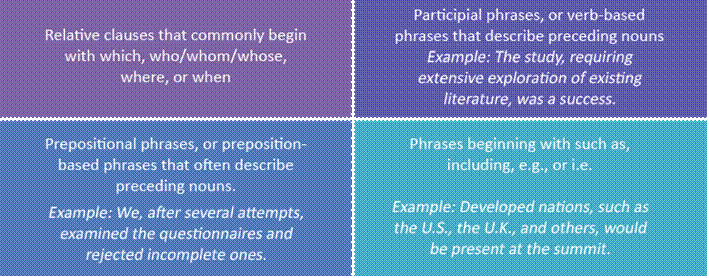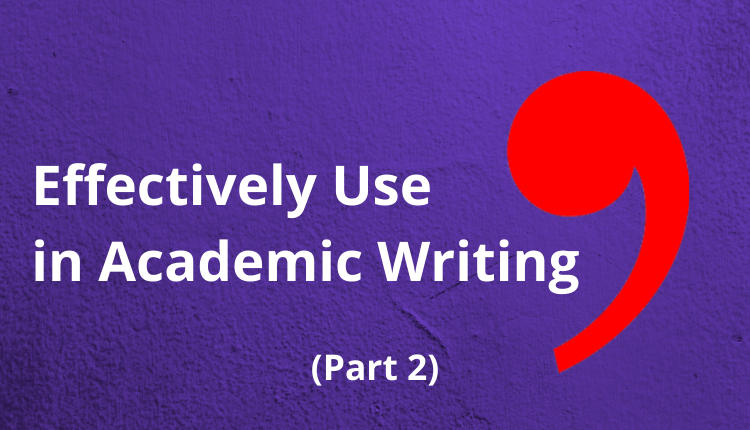“I was working on the proof of one of my poems all the morning, and took out a comma. In the afternoon I put it back again.”
– Oscar Wilde
The previous article described the elementary rules of comma usage. Continuing in that vein, we will now discuss comma usage with parenthetical elements.
Commas pose difficulties for a novice writer because apart from the elementary rules, comma usage can also be contextual. Such ambivalence can be resolved by thoroughly understanding the content.
Alternatively, one can also use the various grammar correction tools available online, like Trinka. However, unlike other tools, Trinka is uniquely designed for assisting in scientific writing. Its robust AI-system can cater to the subtle requirements of academic writing such as technical spellings, style guides preferences, consistency, formal tone, amongst many others.
With Trinka, using commas correctly with parenthetical elements is also quite easy! Let us find out what they parenthetical elements are.
Parenthetical Elements
Parenthetical elements contain information that is not vital to the meaning of a sentence; that is, if such information is left out, the sentence will still make sense. Parenthetical elements comprise the following: an example, an explanation or clarification, or an aside.
Clauses that provide additional information necessary to the broad meaning of the sentence are known as restrictive clauses. Such clauses are generally introduced by the relative pronouns “which” or “that.”
Clauses that provide additional information that can be removed without changing the meaning of the sentence are known as non-restrictive clauses. Such clauses usually begin with the relative pronoun “which” and are either set off by commas on either side when present in the middle of a sentence or preceded by a comma if present at the end of a sentence.

American English prefers using “which” for non-restrictive clauses and “that” for restrictive ones, whereas British English does not show any specific preference, i.e., which or that can be used to introduce both restrictive and non-restrictive clauses. No matter the variety of English, communicating clearly depends on the writers’ accurate interpretation and presentation of the content. Using commas correctly will help the writer achieve this and with tools like Trinka, it could be an easy feat.
Parenthetical elements may comprise the following types of clauses and phrases.

Examples
- An instance where an incorrect comma may lead to communicating inaccurate or ambiguous information is shown in the following sentence.
The narrator describes Jude’s room, where Jude is drying Sue’s clothes beside her as she sleeps upright in a chair, wearing his suit.
Here, the incorrect set-off conveys the improbable information that Jude’s room is “wearing his suit.”
- Again, let’s consider the following sentence.
E.B Jones examines Communism’s main characteristics, and its purpose.
While it may seem like “…and its purpose” is extra information and an afterthought, the sentence could be made clear by removing the parenthetical comma.
E.B Jones examines Communism’s main characteristics and its purpose.
This means that E.B Jones is examining both the characteristics and the purpose of Communism; that is, it is a list comprising two items.
Thus, it is essential to thoroughly understand the content as well as the intent before representing it in writing. Express and edit responsibly!
If you are someone who is in search for a one-stop AI-driven assistance for a better writing experience, Trinka could be your answer. Trinka is world’s first language enhancement tool that is custom-built for academic and technical writing. It has several exclusive features to make your writing ready for the global audience.

